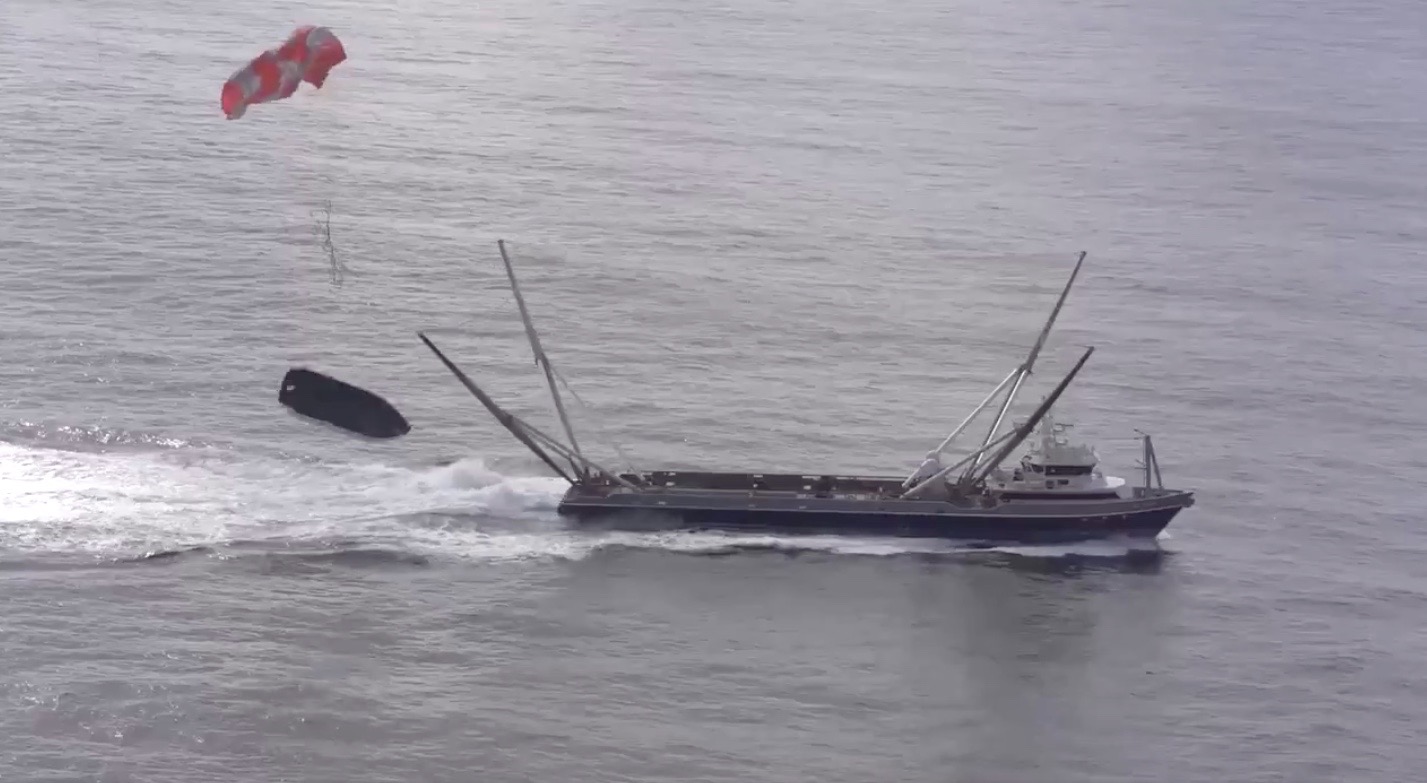So Close! SpaceX Just Misses Rocket Fairing Catch at Sea with Mr. Steven (Video)
OK, now that was a near miss.
We've seen SpaceX's net-equipped boat, Mr. Steven, come close to catching payload fairings — the protective nose cones that surround satellites during launch — out of the sky, both during operational missions and during tests.
But the speedy ship actually had a fairing in its clutches during a recent test off the California coast, a newly released SpaceX video shows. The hardware hit the net and seemed to rest momentarily, but then tipped up and slid downward, off the net and into the waiting whitewater wake. [SpaceX's Mr. Steven: A Rocket Nose-Cone Catching Boat in Photos]
Such tests are part of SpaceX's effort to develop rapidly reusable spaceflight systems, a breakthrough that company founder and CEO Elon Musk has said could slash the cost of space exploration.
SpaceX already routinely lands and re-flies first stages of its workhorse two-stage Falcon 9 rocket.
Catching payload fairings could lead to further cost savings, as each one costs about $6 million, Musk has said. (The billionaire entrepreneur previously said he hoped to reuse Falcon 9 upper stages as well, but he has backed off this ambition for now.)
Falcon 9 fairings come back to Earth in two pieces during operational launches. Each half features small steering thrusters and a parafoil, to help guide and slow its descent.
Breaking space news, the latest updates on rocket launches, skywatching events and more!
SpaceX wants Mr. Steven to snag falling fairing halves before they hit the seawater, which is extremely corrosive. But successful catches may not be necessary for fairing reuse; shortly after a December SpaceX launch, Musk said the company might dry out the dunked fairing halves and use them again anyway.
Mr. Steven has been conducting a series of recovery tests in the Pacific Ocean lately, during which fairing halves are lofted into the sky by helicopters and then dropped for the boat to chase down. But it appears that Mr. Steven is about to get some more serious action.
SpaceX posted the new 30-second video on Twitter Tuesday (Jan. 29), along with the following words: "One of Mr. Steven’s final West Coast fairing recovery tests before shipping out for the East Coast. Wait for it…"
SpaceX has a couple of Falcon 9 launches scheduled from Florida's Space Coast next month — the planned Feb. 18 liftoff of a moon lander for the Israel-based organization SpaceIL and the PSN 6 communications satellite; and Demo-1, the first orbital test flight of SpaceX's Crew Dragon capsule.
Crew Dragon will carry NASA astronauts to and from the International Space Station. Demo-1, which will launch no earlier than late February, is an uncrewed mission to the orbiting lab. If everything goes well, the capsule will tote its first passengers to the ISS in June.
Mike Wall's book about the search for alien life, "Out There" (Grand Central Publishing, 2018; illustrated by Karl Tate) is out now. Follow him on Twitter @michaeldwall. Follow us @Spacedotcom or Facebook. Originally published on Space.com.

Michael Wall is a Senior Space Writer with Space.com and joined the team in 2010. He primarily covers exoplanets, spaceflight and military space, but has been known to dabble in the space art beat. His book about the search for alien life, "Out There," was published on Nov. 13, 2018. Before becoming a science writer, Michael worked as a herpetologist and wildlife biologist. He has a Ph.D. in evolutionary biology from the University of Sydney, Australia, a bachelor's degree from the University of Arizona, and a graduate certificate in science writing from the University of California, Santa Cruz. To find out what his latest project is, you can follow Michael on Twitter.

